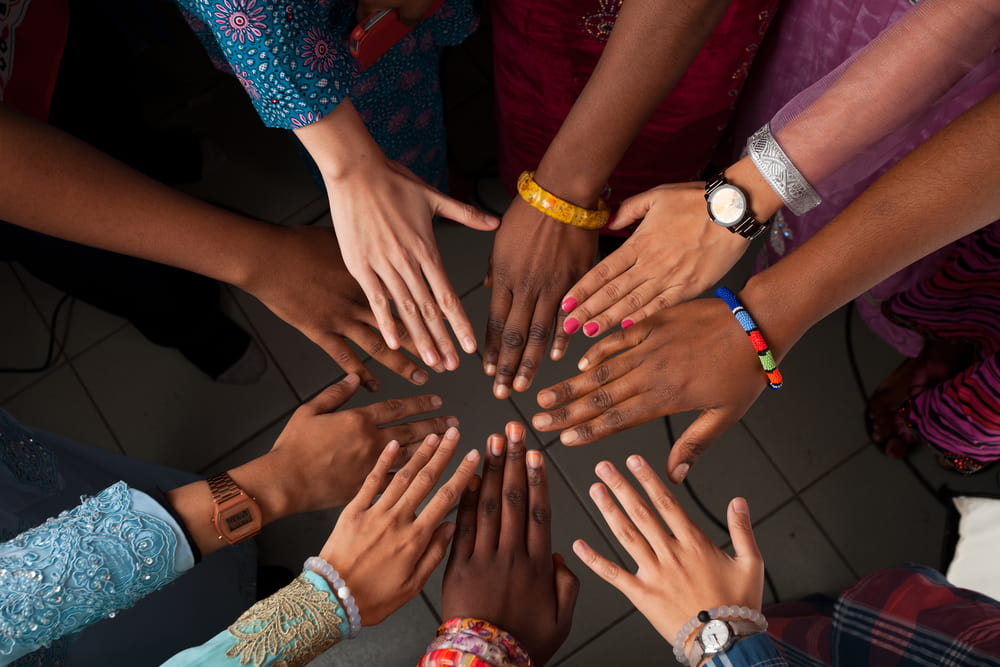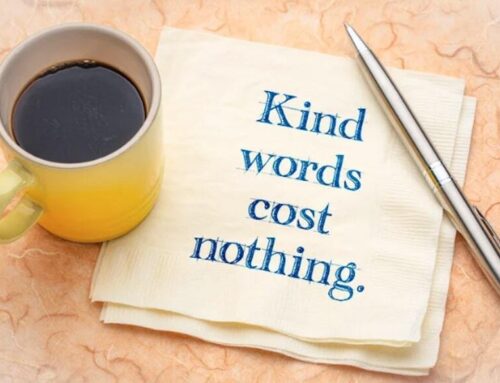
In any educational setting, the ability to navigate interpersonal conflicts is as vital as academic success. For students, whether kids or teens, conflict resolution is a skill that shapes their school experience and their entire lives. Conflicts among students can manifest as bullying, social exclusion, and disputes over group projects, among others. These conflicts, if left unresolved, can lead to a decline in academic performance and emotional well-being.
At AllWin Conflict Resolution Training, we believe in teaching conflict resolution skills to empower students with the tools they need for resolving conflicts effectively. By learning to teach children these essential skills, educators and parents can foster an environment of understanding and respect.
Our peacebuilders and trainers are seasoned practitioners who excel in teaching conflict resolution, ensuring that every session is rooted in real-world applications and tailored to youthful audiences. Through problem-solving strategies and interactive practices, our goal is not only to teach conflict resolution but also to instill lifelong competence in resolving conflicts among the younger generation.
The Importance of Conflict Resolution Skills for Students (Kids & Teens)
Conflict resolution skills are essential tools for students of all ages. They help them navigate the complexities of relationships and conflicts that arise during these formative years. Developing these skills early in life equips children with the ability to handle and resolve conflicts gracefully, paving the way for academic success and well-rounded personal development.
Fosters Emotional and Social Intelligence
Learning conflict resolution early helps children understand and manage their emotions and reactions. This emotional awareness is crucial for self-regulation, allowing students to handle stress and frustration healthily. Teaching kids these skills encourages them to develop empathy toward others, understand different perspectives, and recognize the impact of their actions.
Enhances Communication Skills
Effective conflict resolution necessitates advanced communication skills. Students learn to articulate their thoughts and feelings without aggression, listen actively, and seek mutual understanding. These abilities are fundamental in personal relationships, academic settings, and future professional settings.
Builds Problem-Solving Capabilities
Conflict resolution inherently involves problem-solving. Students equipped with these skills can identify the root of a conflict, think creatively about solutions, and negotiate outcomes that satisfy all parties involved.
Promotes a Positive Educational Environment
Teaching students conflict resolution contributes to a more harmonious classroom. When students know how to resolve conflicts, there’s a noticeable decrease in classroom disruptions, leading to a better learning environment for everyone.

Understanding the Basics of Conflict Resolution
A conflict, fundamentally, is a disagreement or argument where the parties involved perceive a threat to their needs, interests, or concerns. Within schools, especially among kids and teens, these conflicts can arise from various sources.
What Are The Main Causes of Conflict?
One common cause of student conflict is bullying or harassment, which creates a hostile environment for those targeted. Competition is another significant factor; this includes striving for better grades or higher popularity, which can intensify tensions between students involved. Moreover, differences in cultural values or beliefs also contribute significantly to student disagreements, reflecting the diverse backgrounds students bring to the school setting.
Another pervasive issue is the frustration with schoolwork or social demands. Such pressures can lead to big emotions and big feelings, making students feel sad or overwhelmed, which in turn may escalate conflicts.
Additionally, personal disagreements between students are frequent, often stemming from miscommunications or perceived slights, which can be exacerbated by making accusations rather than seeking to understand differing viewpoints.
Why Should Students Learn Conflict Resolution?
For middle school students who are at a critical developmental stage, learning how to handle conflict effectively is essential for fostering healthy relationships and maintaining a supportive school atmosphere. When a conflict arises, having the tools to address and resolve these issues constructively is key to developing academic skills and life-long interpersonal competencies.
5 Conflict Resolution Skills for Students
At AllWin, we believe the following five conflict resolution skills are essential for students:
1. Effective Communication
Developing effective communication techniques is critical in conflict management among young people. These methods help them express themselves clearly and respectfully, paving the way for peaceful problem-solving.
Role Playing With an Adult
Role-playing serves as a practical tool for navigating conflicts. By acting out scenarios, kids and teens can explore various perspectives and reactions in a safe environment. This method allows participants to step into the other person’s shoes and understand different sides of an argument, which is crucial in learning how to resolve conflict.
Using “I” Statements to Express Feelings
I statements are a powerful way to communicate during a disagreement. These statements help speakers express their feelings without casting blame, which can prevent the situation from escalating.
For example, saying, “I feel ignored when my ideas are not considered,” instead of accusing others can facilitate a more constructive dialogue. Encouraging the use of “I” statements can teach kids and teens to express their emotions in a healthy way.
Writing Out Talking Points
Preparing talking points in advance can help clarify thoughts before a conversation. This preparation enables students to articulate their concerns more clearly. It also ensures that important points are not forgotten during emotional discussions. Writing helps structure thoughts, making it easier to brainstorm solutions and engage in peer mediation.
2. Empathy and Active Listening
In the educational setting, active listening and empathy are pivotal for effectively resolving problems among students. These skills aid in dealing with conflict and foster a supportive environment where students feel valued and understood.
Active listening requires attention to the underlying emotions and messages. This can be demonstrated through phrases like “It sounds like you felt really left out when that happened,” which validates the speaker’s feelings and promotes further dialogue.
Encouraging students to ask open-ended questions such as “What do you think would make this situation better?” helps them engage more deeply, showing a genuine effort to solve problems.
Empathy in communication encourages a deeper connection, allowing children to see beyond their own experiences. Statements like “I can see why that upset you” help kids understand and appreciate perspectives outside their own.
Similarly, children understand better how to deal with conflict when they recognize that their feelings and those of others are legitimate and important.
3. Negotiation and Compromise
Negotiation and compromise are essential skills for students at all educational levels. Teaching these concepts helps children and teens manage disagreements constructively and understand the value of give-and-take in relationships.
Encourage Gentle Persuasion
Teaching kids not to push too hard during negotiations is vital. It’s important that students learn the balance between advocating for themselves and recognizing the needs of others. This approach fosters a spirit of compromise and helps teach students how to reach agreements without causing resentment or conflict.
Lead by Example
Children often learn best by observing the behavior of adults. By modeling good negotiating behavior, we teach kids valuable interpersonal skills. Demonstrating respectful communication and showing how to listen and respond thoughtfully in negotiations can significantly influence how students practice these skills in their own interactions.
Create Practice Opportunities
Providing low-stress situations where children learn to negotiate can be highly effective. Allow them opportunities to express their preferences and inquire about the desires of others, helping them to put themselves in another person’s shoes.
These practice scenarios can be simple, such as deciding on a game to play or negotiating extra screen time, which helps teach kids practical application of these concepts in everyday decisions.
4. Managing Anger and Emotions
Effectively handling emotional responses is an important skill for students, especially when navigating conflicts. By learning to manage anger and emotions, kids can enhance their interpersonal relationships and improve their academic and social environments.
Identifying the Source of Anger
One fundamental step in managing emotions during conflicts is to understand what triggers anger. Quick tempers often flare over minor issues because they tap into deeper, unresolved feelings.
For example, a student in elementary school might react strongly to a small incident because it reminds them of a past injustice. Recognizing these underlying causes is crucial for kids to address their anger constructively.
Recognizing Signs and Triggers
Being aware of physical and emotional warning signs can help kids anticipate and control their anger before it escalates. Signs might include a raised voice, clenched fists, or feelings of frustration.
Identifying these triggers early can help students take proactive steps to manage their responses, such as stepping away from the situation temporarily or using deep breathing techniques.
Calming Techniques
Learning methods to calm down is essential for managing emotions during conflicts. Techniques such as counting to ten, practicing deep breathing, or visualizing a relaxing experience can help kids regain their composure and think more clearly. Creating a safe space in schools where students can go to calm down can also be beneficial.
Expressing Anger Constructively
Kids need to learn healthy ways to express their anger. Rather than yelling or blaming others, they can be taught to communicate their feelings using “I” statements and to discuss their frustrations openly and respectfully. Schools can facilitate this learning by providing several solutions and role-play scenarios where students can practice these skills.

5. Building Positive Relationships and Fostering Teamwork
Fostering positive relationships and teamwork among students is crucial for creating a supportive school environment where learning and social development can thrive. By implementing effective strategies, educators can teach students how to interact harmoniously and work collaboratively.
Encouraging Friendship and Social Skills
One effective strategy to promote interpersonal relationships is teaching students the importance of making friends and respecting diverse perspectives. Activities that encourage sharing, cooperation, and understanding of others’ feelings can significantly boost camaraderie among students.
This process includes guided interactions during group projects or paired assignments where students can practice these skills in a controlled setting.
Team-Building Activities
Hands-on team-building exercises are invaluable in teaching students how to collaborate effectively. These activities require them to work together to solve problems or complete tasks, fostering a sense of unity and collective achievement.
For example, educators might use sports, academic competitions, or group research projects as opportunities to teach teamwork in an engaging, real-world context.
Communication and Conflict Resolution Strategies
Effective communication is foundational for teamwork. Knowledgeable teachers can employ strategies such as role-playing exercises where students practice how to express their ideas and listen to others.
Additionally, incorporating conflict resolution lessons helps students learn how to stay calm and address disagreements constructively. These strategies aid in maintaining team dynamics and also in building lasting relationships among peers.
Applying Conflict Resolution Skills in School and Social Settings
Implementing conflict resolution skills effectively in both school and social environments is essential to foster understanding and cooperation among students. These skills help young people navigate interpersonal issues with greater maturity and diplomacy.
Integrating Conflict Resolution Activities
Schools can incorporate conflict resolution activities into the curriculum through interactive role-playing games or group discussions that simulate real-life scenarios. These activities teach students how to handle disputes before they escalate. Another approach is the use of mediation sessions guided by peers or educators, which empower students to resolve conflicts independently.
Encouraging Self-Regulation Techniques
Teaching students to take deep breaths and manage their emotions during conflicts is a vital component of conflict resolution strategies. This method helps them pause and assess the situation calmly, which is crucial in achieving win-win solutions. Educators can facilitate exercises that focus on emotional control to reinforce these habits.
Promoting Conflict Resolution as a Daily Practice
Implementing conflict resolution strategies on a daily basis encourages students to apply these lessons consistently, not just when a dispute arises. Schools can establish a framework where conflict resolution skills and strategies are part of regular conversations, enabling students to become more adept at handling potential conflicts in any setting.
Real-life Examples and Case Studies: The Benefits of Conflict Resolution Training
Implementing conflict resolution training in educational settings not only addresses immediate disputes but also instills lifelong social skills in students. Here are some real-life examples that showcase the impact of such training:
- Elementary School Peer Mediation Program: A public elementary school introduced a peer mediation program where students were trained to help others resolve playground conflicts. Within a year, reported incidents of bullying decreased by 40%, demonstrating how empowering students to manage their own disputes can foster a more harmonious school environment.
- High School Workshop Series: A high school faced ongoing issues with student conflicts disrupting classes. After implementing a series of conflict resolution workshops, students reported feeling more equipped to handle disagreements, and teachers observed a noticeable improvement in classroom behavior and student relationships.
- Middle School Conflict Resolution Curriculum: A middle school integrated conflict resolution strategies into its social studies curriculum. By the end of the semester, students were actively using learned techniques to address conflicts, leading to fewer classroom disruptions and a more inclusive school culture.
If you’re looking to equip your students and staff with the tools needed to create a peaceful, productive learning environment, contact AllWin today. Our specialized conflict resolution training courses are designed to meet the unique needs of educational settings, empowering both students and teachers with essential skills for success.

About the Author: Jeremy Pollack
Jeremy Pollack, Ph.D. is the founder of Defuse De-Escalation Training, a sister company of Pollack Peacebuilding Systems, the largest workplace conflict resolution training and consulting firm in North America. He actively participates in de-escalation training and consulting initiatives for a variety of industries, from Fortune 500 companies to well-known non-profits. Besides his Ph.D. in Psychology from Grand Canyon University, Jeremy holds a Master’s Degree in Negotiation, Conflict Resolution, and Peacebuilding (NCRP) from California State University, Dominguez Hills. He is also a member of several organizations focused on conflict resolution and peacebuilding, such as the Peaceful Leadership Institute, the Association for Conflict Resolution, and the Division 48 (Division of Peace Psychology) of the American Psychological Association. Jeremy also holds several certifications in the field of training and coaching: he is a Certified Organizational Development Coach (CODC™), a Certified Clinical Trauma Specialist-Individual (CCTS-I™), and an Associate Certified Coach (ACC) under the International Coaching Federation.








